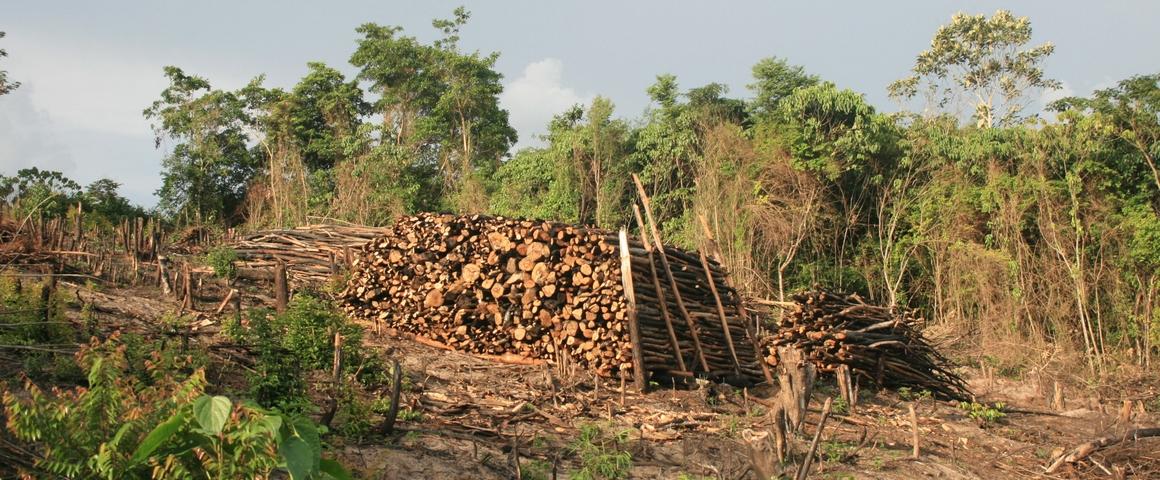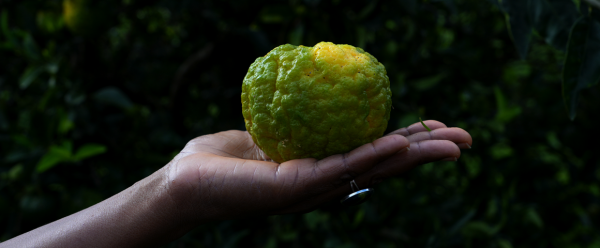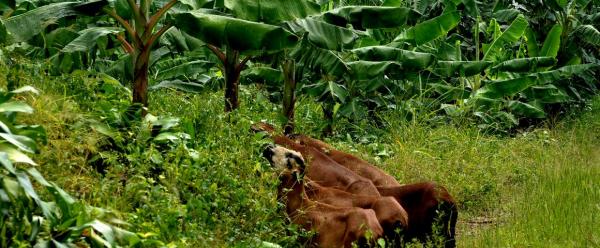Science at work 19 December 2025
- Home
- CIRAD news
- News
- Land use planning project in Congo
Congo is embarking on an ambitious land use planning project

Woodpile being built to produce charcoal, which is used in urban areas of Congo as a domestic fuel © E. Dubiez, CIRAD
In Congo, some 90% of arable land us currently unused. The country's economy currently relies on its oil revenue. With a view to economic diversification and food security, the Congolese government is launching a sustainable land use programme (PUDT) this year. The agricultural sector should benefit from the project, which aims to rethink rural land use.
The PUDT is funded by the Initiative pour les Forêts d’Afrique Centrale (CAFI) and the Agence française de développement (AFD), and associates four Congolese government ministries, including the Ministry of Land Use Planning, Infrastructures and Highway Maintenance (MATIER), its coordinator. It is working with several international research and development organizations and NGOs*.
At CIRAD, the project involves researchers from various fields: geographers, agronomists, foresters, economists, and so on. Several are assigned to Brazzaville, including Emilien Dubiez, CIRAD PUDT project leader and coordinator of the project's fuelwood component: "The aim is to work together to build a procedure for defining the priorities for land use planning in Congo. This means multi-stakeholder and multi-sector consultations, to come up with a shared vision of land use planning". The forestry engineer also mentions the plans for capacity-building operations for the stakeholders involved, in terms of the basic principles of land use planning. "The challenge is to translate the results into information of use to policymakers", he adds.
A Memorandum of Understanding was signed between Congo and France in Brazzaville on 15 November. It confirms that CIRAD has the necessary legal status to conduct operations across the Republic of Congo, in particular within the framework of the PUDT.
The four components of the PUDT, between development and ecosystem conservation
CIRAD's involvement in the PUDT centres on four thematic components:
- Land use planning
Consultation processes will be vital in guaranteeing that the needs and constraints of every sector and every stakeholder are taken into consideration. This approach, which is relatively novel as far as the Congolese authorities are concerned, will mean training staff and developing appropriate tools. Operations will be nationwide, and the priorities will be defined based on two pilot départements: Pool and Niari, in the South of the country. Ronan Mugelé, who is coordinating this component for CIRAD, explains that "we will, for instance, be using foresight tools, to define the direction we want a zone to take in the coming two decades. The workshops will allow stakeholders to explain their objectives and take decisions together, hopefully by reaching a consensus".
- Sustainable forest management
Deforestation rates in Congo are relatively low. However, the need to diversify the economy by means of agriculture could trigger a change in land use and impact on high conservation value (HCV) or high carbon stock (HCS) forests. Those forests will be identified and included in the national land use planning plan, to guarantee their non-conversion. According to Vivien Rossi, a CIRAD biostatistics researcher in charge of the forests component, "Identifying HCV and HCS forests means coming up with a methodology that every player both understands and accepts, be they ministries, decentralized authorities or civil society organizations. This shared vision will be built by means of an ongoing consultation process that will steer the methodological choices to be made. The aim is to ensure that each and every player takes on board the map of those forests that should not be converted".
- Definition of the agricultural du domain and zero-deforestation projects
The agricultural sector in Congo is dominated by family farms practising shifting cropping and slash-and-burn. Under the PUDT, studies are scheduled of the agronomic potential of different zones and to identify zones suitable for developing crops prioritized by the government, such as cassava, groundnut, plantain banana, etc. The value chains will be analysed and strengthened, and environmentally virtuous cropping practices proposed, in line with the sectoral choices made by the Ministry. Julie Murel, coordinator of this component for CIRAD, says "diversifying the economy by means of the agricultural sector involves identifying production basins for agro-industry and business-minded farmers, while guaranteeing areas devoted to subsistence farming. Those basins must be defined in line with production, zero-deforestation and agroecological targets".
- Sustainable energy supplies for the cities of Brazzaville and Pointe Noire
On a national level, pressure on forest resources is still low. More than half the population is concentrated in the cities of Brazzaville and Pointe Noire, which exert considerable pressure on the country's agricultural and fuelwood basins, to satisfy urban demand. As Emilien Dubiez points out, "the aim is to create the conditions for sustainable, stable domestic fuelwood supplies to urban areas". Researchers will begin by compiling data on urban consumption, value chain organization, the scope of the supply basin and its dynamic. The second phase – consultation – will serve to define technical and economic instruments for managing wood resources sustainably. The third and final phase will focus on supporting implementation of sustainable energy supply master plans (SDABEs), via basin management committees.
The challenge for the PUDT is to succeed in reconciling sectoral studies, relations and constraints, to facilitate nationwide land use planning. This can only be achieved by means of a collective learning process.
* The Republic of Congo sustainable land use programme (PUDT) is the fruit of a letter of intent to establish a long-term partnership aimed at implementing the National REDD+ Strategy Investment Plan, which was signed by the Congolese and French presidencies in September 2019. The PUDT is one of the projects supported by the Congolese government within the framework of that initiative. It involves four ministries: Land Use Planning, Infrastructures and Highway Maintenance (MATIER), the project's coordinator; Agriculture, Livestock and Fisheries (MAEP), Environment, Sustainable Development and Congo Basin (MEDDBC) and Forestry Economy (MEF). CIRAD is a partner in its implementation, along with CIFOR, WWF, WRI, WCS and HCV-RN.



























